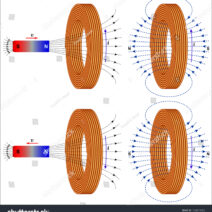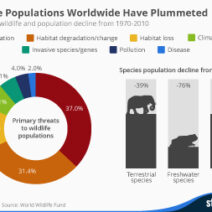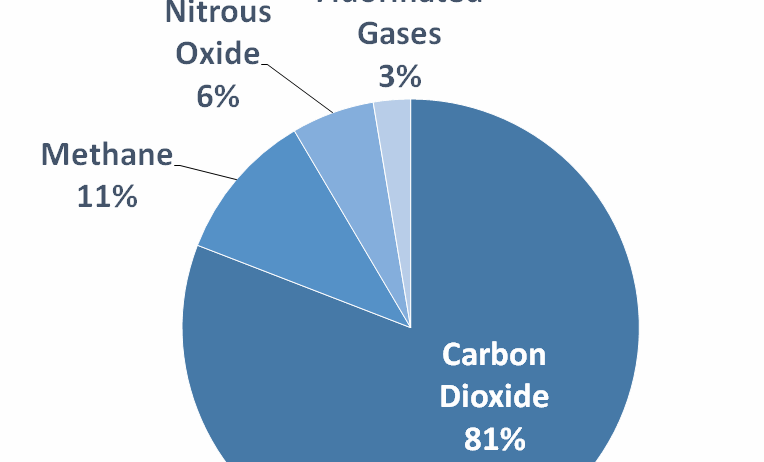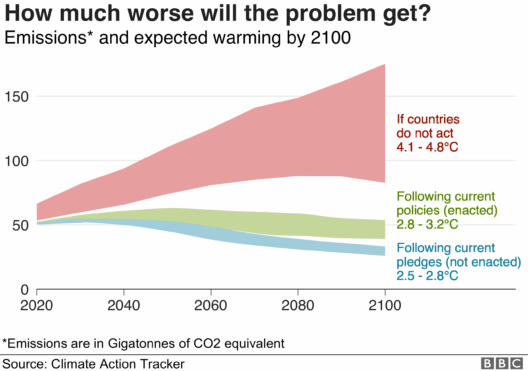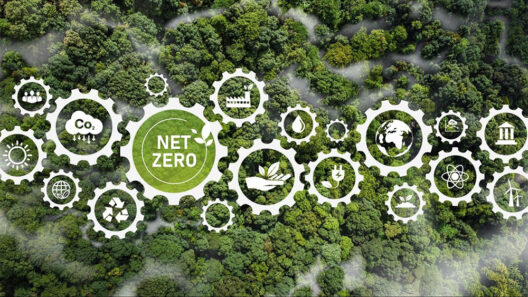Greenhouse gases (GHGs) are often described as the silent architects of our warming world. Their presence is ubiquitous yet largely invisible to the naked eye, making them an enigma that warrants deeper exploration. These gases, notably carbon dioxide (CO2), methane (CH4), and nitrous oxide (N2O), play a pivotal role in regulating the Earth’s temperature by trapping heat in the atmosphere. As the planet grapples with unprecedented climatic changes, understanding the intricate balance these gases maintain is crucial for both comprehension and action.
The phenomenon known as the greenhouse effect is essential for sustaining life. It is a natural process where certain gases in the Earth’s atmosphere allow sunlight to enter but prevent a significant amount of the heat that the sunlight brings from escaping back into space. This mechanism creates a temperate environment, favoring the existence of diverse ecosystems. However, an oversaturation of these gases due to human activities has led to a discernible enhancement of the greenhouse effect, resulting in global warming.
Carbon dioxide, the most prevalent greenhouse gas, emanates primarily from fossil fuel combustion and deforestation. Its atmospheric concentration has surged from about 280 parts per million (ppm) in the pre-industrial era to over 410 ppm today. This drastic increase can be attributed to industrialization, which has catalyzed an insatiable demand for energy and resources. The ramifications of elevated CO2 levels are profound, influencing not only temperature but also oceanic acidity and global weather patterns.
Methane, although less abundant than CO2, possesses a potency that is alarming. It is estimated to be over twenty times more effective than carbon dioxide at trapping heat over a 100-year period. Methane emissions arise from various sources, including agriculture, landfills, and natural gas extraction. Livestock, particularly cattle, contribute significantly through enteric fermentation—a natural digestive process that results in methane being released. With an increasing global population, the demand for meat products continues to rise, exacerbating the problem. Understanding methane’s potency is crucial in the fight against climate change, as reducing its emissions can yield considerable short-term benefits for global warming mitigation.
Nitrous oxide presents another layer of complexity in the greenhouse gas narrative. Primarily released from agricultural activities, particularly from the use of synthetic fertilizers and livestock waste, nitrous oxide is nearly 300 times more effective than CO2 over a century. Agricultural practices have become integral to food production, but they also carry environmental consequences. The prevalence of industrial farming methods, combined with inadequate management practices, has led to an alarming rise in nitrous oxide emissions. Unpacking this issue requires an examination of modern agricultural techniques, the socio-economic imperative of food security, and the unsustainable practices that ensue.
Chlorofluorocarbons (CFCs) and hydrofluorocarbons (HFCs), while not as widely discussed, also contribute to the greenhouse effect. Originating from industrial processes and household products, these gases have a high global warming potential, leading to global initiatives aimed at their reduction. The Montreal Protocol successfully curbed CFCs due to their ozone-depleting capabilities. However, the subsequent rise in HFC emissions poses its own challenges, as these chemicals are now being used as replacements. The quest for more sustainable alternatives must include a thorough analysis of their environmental impacts.
While the implications of greenhouse gases are dire, they also serve as a powerful catalyst for change. The connection between GHGs and climate policy is undeniable. Global efforts, such as the Paris Agreement, aim to curb emissions to alleviate the impending effects of climate change. Nations are increasingly recognizing the importance of transitioning to renewable energy sources, enhancing energy efficiency, and implementing carbon capture technologies.
However, the road to mitigating GHG emissions is fraught with obstacles. Economic interests often clash with environmental imperatives, leading to a slow trajectory toward policy implementation. Additionally, public awareness and education play critical roles. Without a comprehensive understanding of the sources and consequences of GHG emissions, mass mobilization for action will remain an elusive goal. Hence, education about greenhouse gases should commence at all levels—children must learn about sustainable practices, while adults should confront the realities of their consumption habits.
In light of this complexity, it becomes imperative to explore innovative and holistic approaches to solve the issue of greenhouse gas emissions. For instance, reforestation and afforestation can serve as natural carbon sinks, sequestering CO2 and improving overall biodiversity. Additionally, promoting sustainable agricultural practices can curtail methane and nitrous oxide emissions significantly. Community-based initiatives, grassroots movements, and collaboration among stakeholders can create the momentum needed to foster systemic change.
Moreover, the advent of technology presents both challenges and opportunities in the realm of greenhouse gas emissions. Carbon capture and storage technologies have the potential to reduce CO2 emissions from industrial processes. However, the efficacy and scalability of these technologies remain subjects of ongoing research and debate. Engaging in dialogue about technological advancements versus actionable policy change requires a balanced approach, ensuring that neither aspect is prioritized at the expense of the other.
The role of individual action should not be dismissed, either. While systemic changes are necessary, the collective efforts of individuals can accumulate to create substantial impact. Simple measures such as reducing meat consumption, utilizing public transportation, and embracing renewable energy sources can contribute to a reduction in personal carbon footprints. It is essential to communicate the message that every effort counts, no matter how minuscule it may seem in the grand scheme of global efforts.
In conclusion, greenhouse gases remain the unseen architects of our warming world, intricately woven into the fabric of our climate systems. Their potent effects are a reminder of the delicate balance that sustains our planet. While the challenges presented by these gases are immense, they also provide an opportunity for collective action and innovation. By deepening our understanding of GHGs and actively engaging in solutions, society can redirect its path toward a sustainable future, ensuring that the architects of our world contribute to its preservation rather than its degradation.

